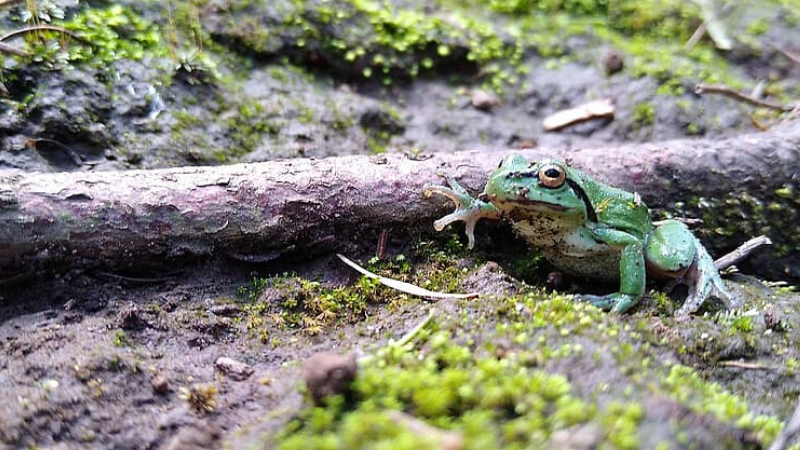The return of the frogs at Alice Miller School

Located in the Macedon Ranges and surrounded by woodland, the Alice Miller School is home to two farm dams that are teeming with different forms of life. Students share the 80-acre bush campus with kangaroos, koalas, echidnas, wombats and platypuses.
The Macedon Ranges is rich in biodiversity, however, many species are threatened or endangered. Local native fauna lost their habitats in the destruction of forests and woodland areas across central Victoria. Some species, including the Long-Nosed Bandicoot and Spotted Tailed Quolls, have completely disappeared from the region.
But not all hope is lost. In 2018, a Common Dunnart was spotted for the first time in the area in 30 years, giving hope that some endangered species may still persist in the environment. Their ongoing survival relies on protecting existing vegetation and improving landscape connectivity.
The dams at Alice Miller School were constructed several years ago, and as common with many artificial damns, they were built with steep banks. Plants struggle to establish themselves and sink their roots into steep slopes, and the resulting lack of vegetation contributes to soil erosion. With so little vegetation remaining at the immediate perimeter of the water, one of the dams in particular was falling prey to damaging erosion. Once erosion begins, it only gets worse.
If detected early, protective grass vegetation can prevent further damage. To protect their dam, year 9-10 biology students and their teacher, Mr Daniel Park, decided to revegetate sections of the banks. The students mapped sites around the dam to be revegetated for maximum soil and biodiversity protection. Following consultation with the North Central Catchment Management Association (CMA) and Rakali Ecological Consulting, they decided to plant three native species: Tall Rush, Common Spike-Rush, Tassel Sedge. Using a Cambridge University Press National Science Week Grant to buy these native shrubs from local nurseries, the students planted one-third of the site during National Science Week and continued to plant over the remaining area over the course of the year. Given the extent of the damage, students had to install planting benches along the dam bank to hold enough soil to plant the plant species. Without it, the plants would have washed away, along with soil, into the dam, in the case of heavy rain.

As students continued to plant native species, they listened out for the return of frog populations to the dam. Prior to planting, they monitored local frog populations by listening to their calls. Every frog species makes a unique, distinguishable sound. Students used the FrogID citizen science smartphone app developed by the Australian Museum, which records frog croaks, whistles, bleats and barks to be analysed by experts who determine the species behind the sound. Last year, there were two species of frogs found at the dam: Common Froglets and Brown Tree Frogs. Since revegetating the dam, populations of Eastern Banjo Frog and Spotted Marsh Frog have also inhabited the area.
Following the success of planting along the banks, year 9-10 biology students this year (now a different cohort) decided to plant aquatic species to better vegetate the dam itself. At the end of term 1, students planted Upright-Milfoil, Australian Gypsywort, Shining Pennywort, Water Ribbons. Unfortunately, due to COVID-19 pandemic, they were unable to set up protection for these new plants and the plants did not survive, likely having been eaten by ducks. This has not dampened Daniel’s spirits though – he is eager to try again next year. When the water levels go down, students will have better access to the bottom of the dam for planting – only this time they will use tree guards.

The native species planted were carefully selected to maximise benefit for frog populations. Tall emergent shrubs, such as the Spike Rush and Tall Rush, on and near the banks, provide protection for adult frogs and emerging froglets from predators. These plants also acquire insect prey as a food source. Submerged and floating vegetation in the dam supply egg lying sites and protection for tadpoles in the tangled, submerged undergrowth. Daniel was told that artificially constructed dams do not support these aquatic plants, but he is determined to prove the people who told him that wrong.
Daniel established the project ‘to give young people a project to improve their own environment’. This will be an ongoing project, and every year the biology class will contribute to the management of the dam. Daniel and the students hope to see once struggling native animal populations bouncing back due to their conservation efforts.

Catriona Nguyen-Robertson
